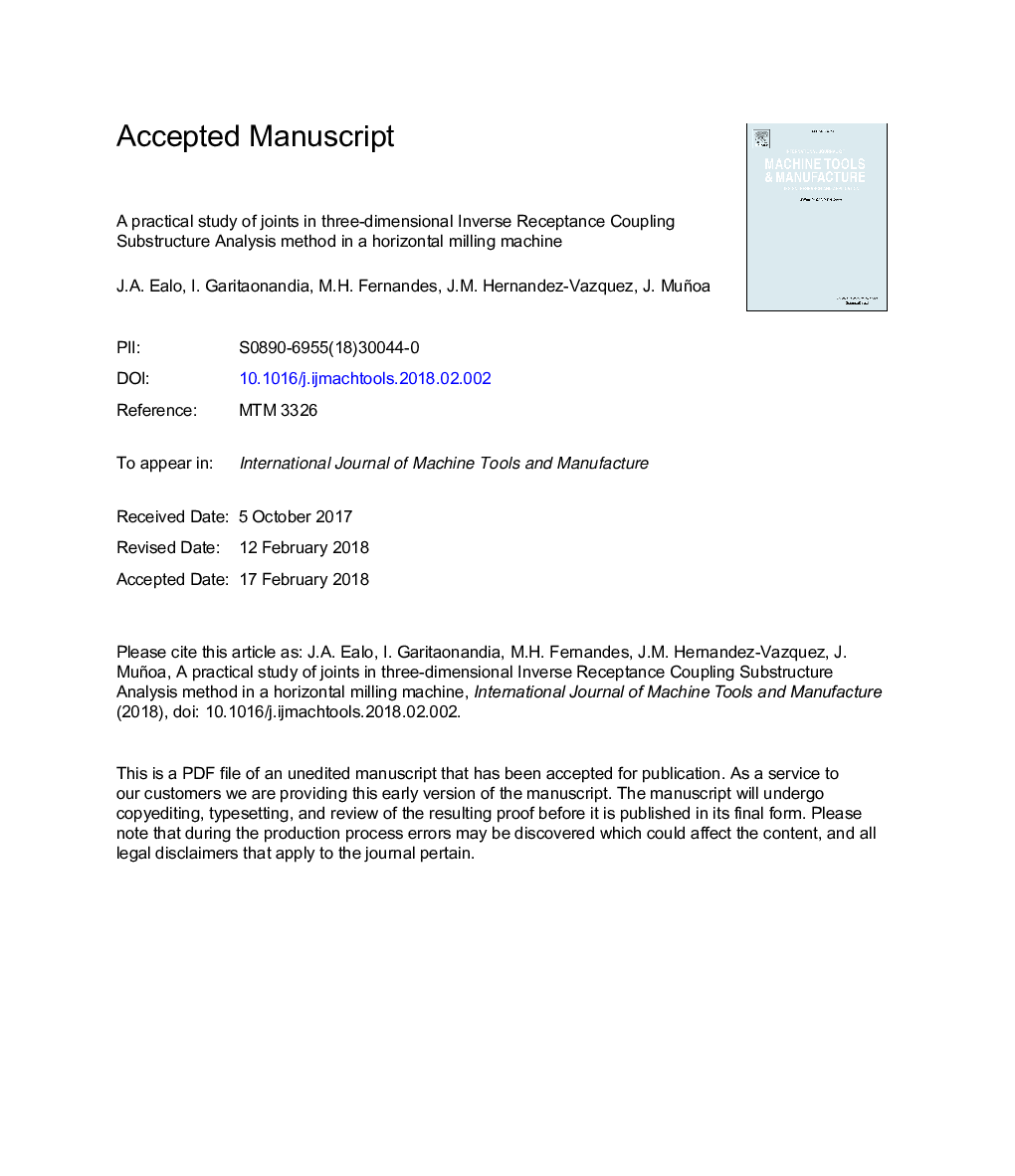| Article ID | Journal | Published Year | Pages | File Type |
|---|---|---|---|---|
| 7173357 | International Journal of Machine Tools and Manufacture | 2018 | 19 Pages |
Abstract
Machine tool components are connected by joints that provide relative motion between contact interfaces. These joints add flexibility to the load path from the tool tip to the foundation and, therefore, the correct determination of joint properties becomes a crucial step if the whole machine performance is to be analyzed. A well suited experimental method to characterize these properties is the Inverse Receptance Coupling Substructure Analysis (IRCSA). In the existing literature, this technique has been widely applied to characterize single two-dimensional connections between two parts, where few measured FRFs are necessary in the implementation. However, a more complex multi-body structure with several joints demands a three-dimensional formulation, where the large number of required FRFs limits the application of IRCSA due to the inherent ill-conditioning of the inverse formulation. The work presented in this paper deals with the mentioned limitation, developing a novel IRCSA approach to characterize completely the linear guideways of an industrial machine tool. To avoid the use of excessive FRFs in the formulation, a procedure to study each joint independently is developed, where an appropriate number of connection points in the contact areas between the rails and the carriages is determined. This way, well-conditioning of the formulation is guaranteed while the required precision is preserved. Furthermore, the presented procedure requires only the measurement of translational degrees of freedom (TDOF), which avoids the need to measure rotational degrees of freedom (RDOF). Comparison of numerically calculated and experimentally measured results has demonstrated the validity of the proposed procedure.
Keywords
Related Topics
Physical Sciences and Engineering
Engineering
Industrial and Manufacturing Engineering
Authors
J.A. Ealo, I. Garitaonandia, M.H. Fernandes, J.M. Hernandez-Vazquez, J. Muñoa,
